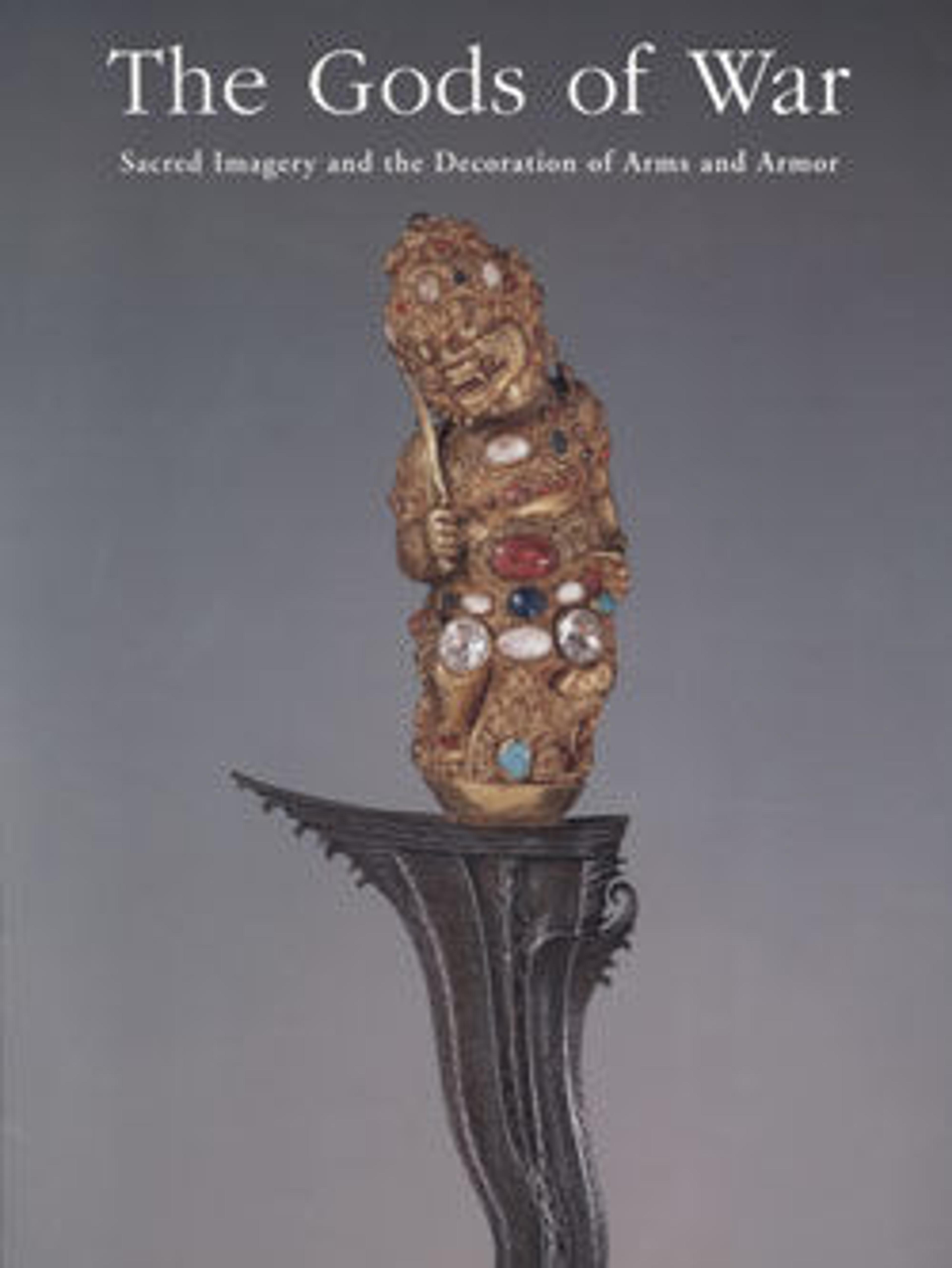Blade and Mounting for a Double-Edged Dagger (Ken)
The symbolic significance of the triple-pronged vajra, as well as its shape, made it an appropriate choice for use as the hilt of a sacred sword (ken), as demonstrated by this extremely rare example of an Esoteric Buddhist ritual object in the form of a ken. The blade dates from the late Heian or early Kamakura period (late twelfth to early thirteenth century), and the gilt-copper vajra hilt was probably made in the early Nambokuchō period (mid-fourteenth century). In Buddhist iconography the sword represents the defense of religious doctrine and the defeat of falsehood and evil. It is an emblem of intelligence and, by extension, of the victory of spiritual knowledge, which opens the path to enlightenment. Combined with a vajra hilt it signifies the sword of wisdom (e-ken), one of the major attributes of Fudō Myō-ō, also referred to as the Great Immovable One. Fudō was the most popular of the Five Great Kings of Light (Go Dai Myō-ō), deities of Hindu origin who were assimilated into the Japanese Buddhist pantheon in the ninth century.
In the Shingon school of Esoteric Buddhism, Fudō is a manifestation of the Supreme Buddha (Dainichi Nyorai), created to fight evil and champion righteous causes. He is also considered to be the first of the twelve buddhas who receive the souls of the dead and guide them to the eternal care of Dainichi Nyorai. It is possible, therefore, that this ken was made for use in a Shingon ritual devoted to Fudō. Images of Fudō frequently appear in the decoration of Japanese armor and weapons. He is usually shown surrounded by flames, holding the sword, point upward, in his right hand, and the rope (kensaku, with which he binds and nullifies evil, in his left hand.
In the Shingon school of Esoteric Buddhism, Fudō is a manifestation of the Supreme Buddha (Dainichi Nyorai), created to fight evil and champion righteous causes. He is also considered to be the first of the twelve buddhas who receive the souls of the dead and guide them to the eternal care of Dainichi Nyorai. It is possible, therefore, that this ken was made for use in a Shingon ritual devoted to Fudō. Images of Fudō frequently appear in the decoration of Japanese armor and weapons. He is usually shown surrounded by flames, holding the sword, point upward, in his right hand, and the rope (kensaku, with which he binds and nullifies evil, in his left hand.
Artwork Details
- Title:Blade and Mounting for a Double-Edged Dagger (Ken)
- Date:blade, late 12th–early 13th century; mounting, 14th century
- Culture:Japanese
- Medium:Steel, wood, copper, gold
- Dimensions:L. of blade 12 1/16 in. (30.6 cm); L. of cutting edge 8 3/16 in. (20.8 cm); L. of hilt 3 13/16 in. (9.7 cm)
- Classification:Daggers
- Credit Line:H. O. Havemeyer Collection, Bequest of Mrs. H. O. Havemeyer, 1929
- Object Number:29.100.1369a–c
- Curatorial Department: Arms and Armor
More Artwork
Research Resources
The Met provides unparalleled resources for research and welcomes an international community of students and scholars. The Met's Open Access API is where creators and researchers can connect to the The Met collection. Open Access data and public domain images are available for unrestricted commercial and noncommercial use without permission or fee.
To request images under copyright and other restrictions, please use this Image Request form.
Feedback
We continue to research and examine historical and cultural context for objects in The Met collection. If you have comments or questions about this object record, please contact us using the form below. The Museum looks forward to receiving your comments.
